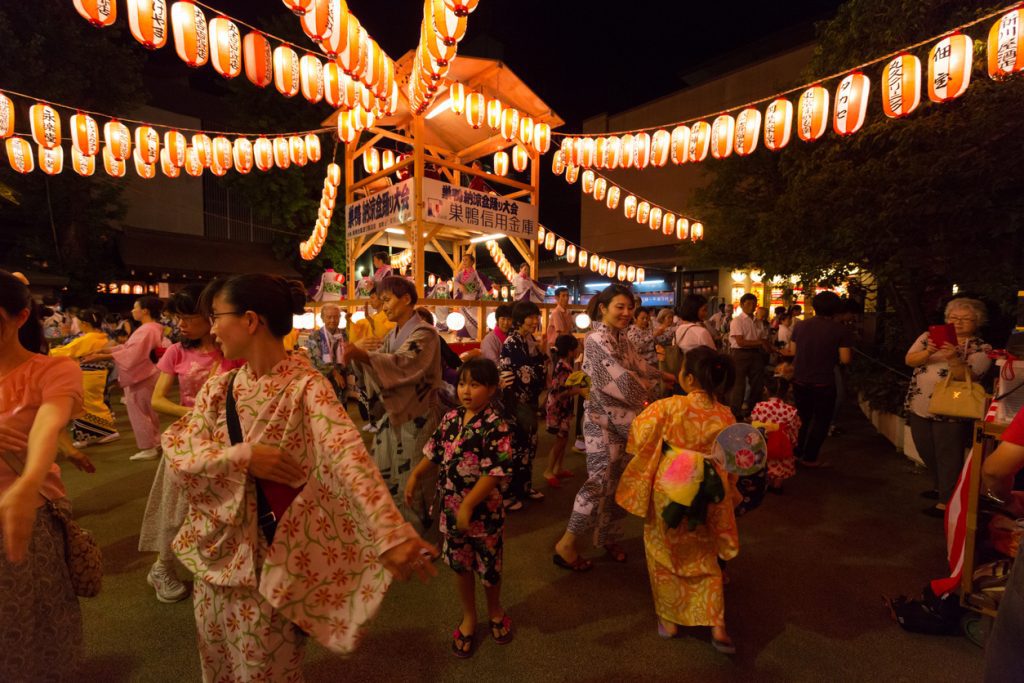Arashiyama is a popular tourist area in northwest Kyoto City. It is famous internationally for its bamboo grove and UNESCO World Heritage site Tenryu-ji temple. However, within Japan, it is better known for the view of the elegant Togetsukyo bridge with the thickly forested Arashiyama mountain behind it. It is truly stunning during the high seasons of spring cherry blossoms and autumn colored leaves.
Despite the area’s easy access from the city center, its distance from there gives it a lighter, freer feel. For over 1,000 years Arashiyama has been a place to enjoy and relax: when Kyoto was Japan’s imperial capital, aristocrats built holiday homes here and messed around in boats on the river. Today, there are more modern ways to enjoy the river and the scenery around it— but you can also stick to the local tradition and ride a rickshaw or a boat.
The quintessential Arashiyama experience is to take in the view of the Togetsukyo bridge. It was first constructed during the early Heian period in 836, but after being repeatedly damaged by floods, was eventually rebuilt in 1934 in its current form.
The best Zen temple
From the bridge, head north to Tenryu-ji temple. It was established in 1339 and was the first to be designated as one of Kyoto’s five major Zen temples. It is noted for the Cloud Dragon painting on the ceiling of the Hatto Hall and for its nearly 700-year old Sogenchi Garden, which was the first to be designated by the Japanese government as a Site of Special Historic and Scenic Importance.
Mystical bamboo
Exit Tenryu-ji by its north gate, then turn left to find yourself in the mystical bamboo grove. How long it will take you to walk this 500-meter path? Well, it depends on how many times you stop to snap photos — it could take a while! The grove’s fame has also brought crowds of tourists. If you want to avoid them, visit the forest in the early morning or late evening.
Most of the sights in Arashiyama are located on the north side of the bridge, but there are some good reasons to cross it. Just to the right at the end of the bridge is a small pier where you can rent a boat. To the left is the Nakanoshima Park, where you can enjoy the scenery from a different angle. This is one of the areas that is decorated in December each year for the Kyoto Arashiyama Hanatouro event. The name of this celebration literally means “light and blossoms pathway” and features dynamic ikebana (flower arrangements) and the illumination of about five kilometers of pathways along Arashiyama’s key thoroughfares, including the bamboo grove, the bridge and the Arashiyama mountainside.
Monkey business
For something a little more dynamic, visit the Iwatayama Monkey Park . Also located to the south of Togetsukyo bridge, you can keep an eye out for one of the 120 or so wild monkeys that live here. And don’t forget to take in the spectacular view of Kyoto.
Ride the river
Arashiyama’s waterways allow for some scenic travels. The river that runs through Arashiyama is called the Oigawa. Its different sections also go by the names of Hozugawa River and Katsuragawa River, which runs near the city center.
The Sagano Romantic Train (also referred to as the Sagano Scenic Railway) is a diesel-powered trolley train with retro stylings that takes passengers on a scenic 25-minute ride through the natural scenery of the Hozugawa ravine. It leaves from the brick building next to the JR Sagano Arashiyama station and ends in Kameoka. From there it is a 10-minute walk to JR Umahori station, from where you can return to Arashiyama or Kyoto station.
If you want to fully experience Hozugawa River, combine the Sagano Scenic Railway with the Hozugawa River Boat Ride. The traditional-style boats carry about 20 people at a time on a two-hour ride through rapids and deep water from Kameoka to Arashiyama. The boarding site is an eight-minute walk from JR Kameoka station.
Know before you go
You can combine the two rides to make a return trip, but will need some help to cover the distance between the two. Ask about this when you buy your tickets (for both) at the trolley train station, or check the details here. For something a little faster paced, get in touch with one of the companies running rafting services down the Hozugawa. Most are located near the JR Umahori Station or the trolley train’s Torokko Kameoka Station.
How To Get There
ADDRESS
20-2 Sagatenryūji Tsukurimichichō, Ukyō-ku, Kyōto-shi, Kyōto-fu 616-8384, Japan
BY TRAIN
From Kyoto Station, take the JR Sagano/San-in Main Line to Saga-Arashiyama Station or Torokko-Arashiyama Station (approx. 15 minutes). Take the Keifuku Line/Arashiyama Main Line (also known as the Randen line) to Arashiyama Station (approx. a 1-min walk to Togetsukyo Bridge). To arrive on the south side of Togetsukyo Bridge, take the Hankyu Main Line from Kyoto Station to Katsura Station and transfer to the Hankyu Arashiyama Line (approx. 20 minutes).
BY BUS
Take the Kyoto City Bus 28 from Kyoto Station (approx. a 30-min bus ride), or Bus 11 from Shijo-Kawaramachi or Sanjo Keihan.













